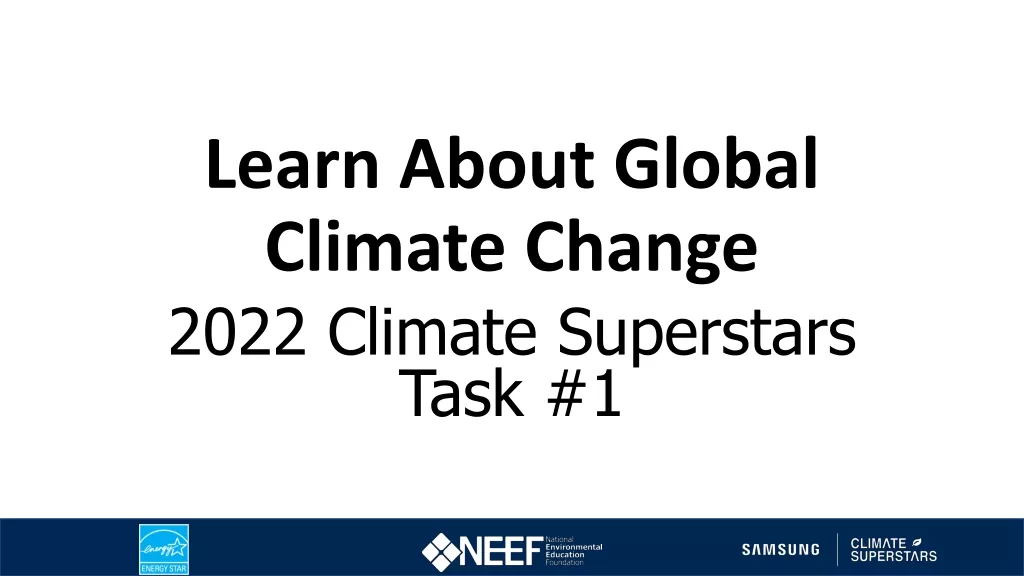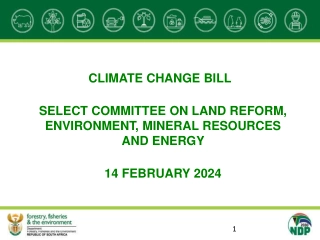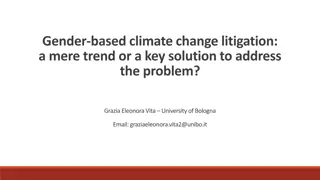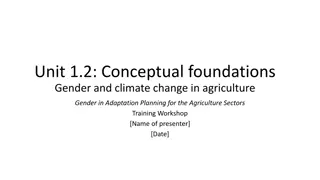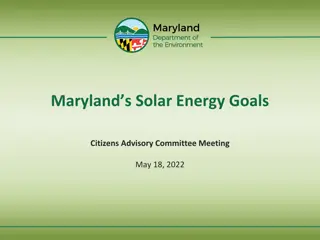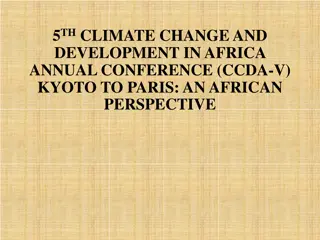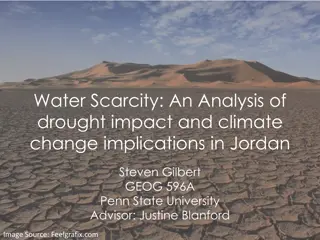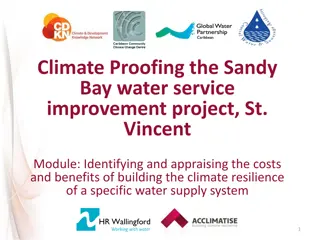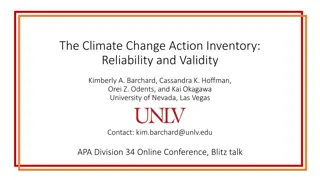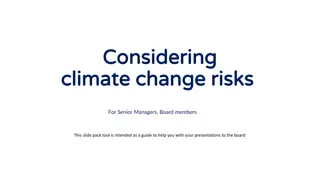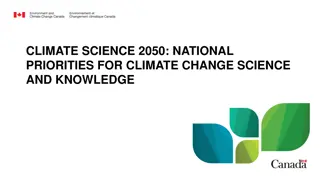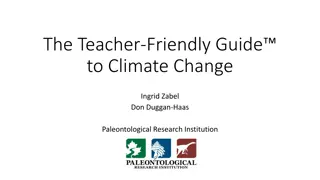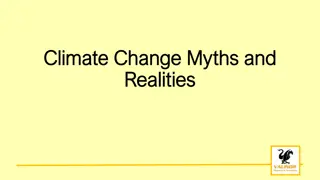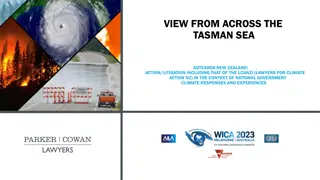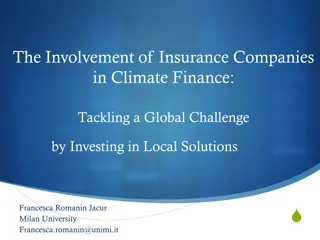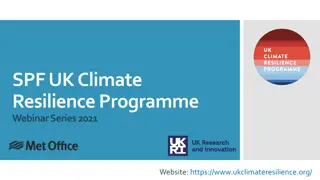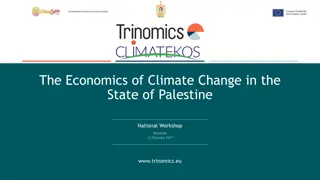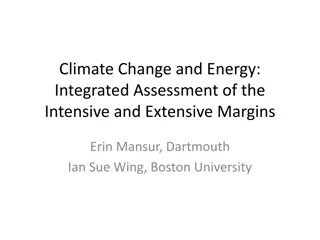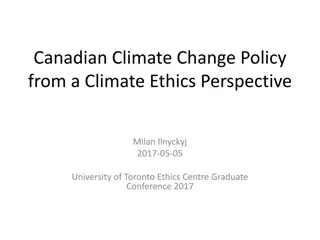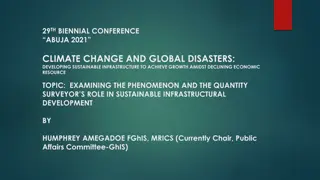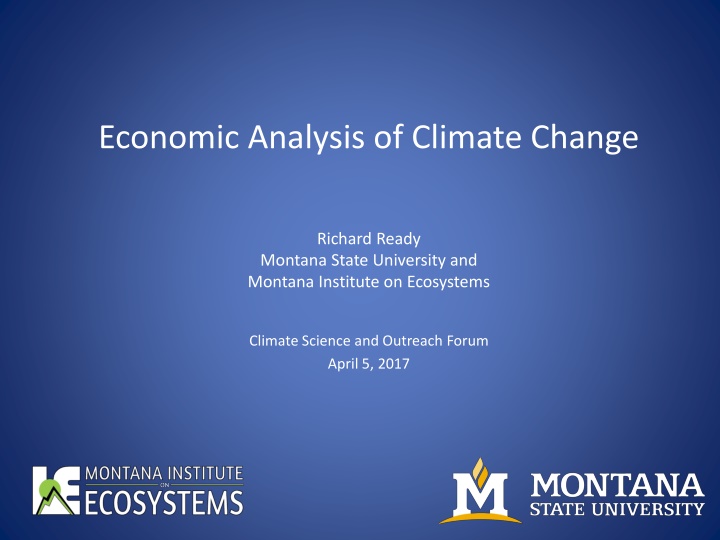
Economic Analysis of Climate Change: Costs and Solutions
This content delves into the economic impacts of climate change, exploring the costs associated with both the damages incurred and the potential solutions available. From bottom-up cost assessments to top-down macroeconomic effects, the research covers a range of topics including the cost of reducing greenhouse gas emissions and the implications for various sectors like agriculture, health, and the economy at large.
Download Presentation

Please find below an Image/Link to download the presentation.
The content on the website is provided AS IS for your information and personal use only. It may not be sold, licensed, or shared on other websites without obtaining consent from the author. If you encounter any issues during the download, it is possible that the publisher has removed the file from their server.
You are allowed to download the files provided on this website for personal or commercial use, subject to the condition that they are used lawfully. All files are the property of their respective owners.
The content on the website is provided AS IS for your information and personal use only. It may not be sold, licensed, or shared on other websites without obtaining consent from the author.
E N D
Presentation Transcript
Economic Analysis of Climate Change Richard Ready Montana State University and Montana Institute on Ecosystems Climate Science and Outreach Forum April 5, 2017
Research on Economics of Climate Change How much will climate change cost us? How much would it cost us to reduce GHG emissions? How much are citizens willing to pay to reduce GHG emissions? If we are going to reduce GHG emissions, what is the least-cost way to do so?
Cost of Climate Change Bottom-up approach Coastal flooding structural damage + cost to defend Impact of increased heat and drought on ag yields Control costs and damages from wildfire Productivity Health impacts Lost recreation opportunities Impact on rare and endangered species Damages caused by severe storms Etc.
Cost of Climate Change Top-down approach Macroeconomic effect of increased temp on GDP
Cost of Climate Change US Cost of BAU vs 2 C Median estimate: 1-2.5% of GDP $1300-$3300 per household per year Higher for more warming New Research: Asymmetry in uncertainty Worst case scenarios are pretty bad, but best case scenarios aren t that great Warming leads to slower economic growth rates Compounding effect could lead to much larger damages over time
Cost of Reducing GHG Emissions Simple Analysis: Compare levelized cost of carbon-free technologies to current lowest-cost technology (i.e. wind/solar with storage vs coal) Cost of renewables declining fast, while cost of coal has been steady or increasing slightly Look at cost to sequester carbon
Cost of Reducing GHG Emissions More Complete Analysis Incorporate co-benefits from GHG reductions Example: Wind/Gas combination vs Coal Electric bills vs hospital bills who pays?
Cost of Reducing GHG Emissions Marginal Abatement Cost Curves
Cost of Reducing GHG Emissions Cost to meet Paris Accord (US) $37-$135B per year $300 - $1100 per household per year A little less than what we currently pay for water and sewer
Cost of Reducing GHG Emissions Some points about costs: Cost estimates vary widely cost of CC more uncertain than cost of emission reductions Be careful of one-time cost estimates vs annual cost estimates Creating or saving a job: is it a benefit or a cost?
Citizen Preferences for GHG Policies 80% believe CC is happening 70% believe govt should do something 60% WTP something to address CC
Summary Cost of BAU: $1300-$3300 But it could be much higher Cost to limit warming: $300 - $1100 Total social cost could be negative if you count co- benefits Average household WTP: $60-$90 40% not willing to pay anything Average driven by a minority with high WTP
Cost-Effectiveness Analysis What is least-cost way to reduce GHG emissions? Want to encourage lower-cost approaches first Want to encourage innovation that reduces costs Want a system that is easy to administer Want a system that is fair Want a system that preserves as much individual freedom as possible
Cost-Effectiveness Analysis Technology Standards All emitters in an industry treated the same No incentive to innovate Need standards for each type of emitter Market-based Approaches Incentives to reduce emissions at lowest cost Need less information about technology in each industry Carbon Fee/Tax What do you do with the revenues? How do you know the right tax? Cap and Trade How do you hand out the credits? How do you know the right cap? Who bears the costs? How do impacts ripple out through economy?
Related Research Topics Impact of fracking on energy markets What drives coal mining employment? Natural gas prices Mechanization Regulation
Trump Executive Order Review/reconsider Obama regulations Clean Power Plan Emission standards for new power plants Methane emissions from oil and gas Revise how Social Cost of Carbon is calculated Remove GHG emissions from NEPA reviews Lift moratorium on federal coal leasing
Trump Executive Order Some Background History GHG regulation Clean Air Act: EPA must regulate pollutants that endanger health or welfare 2007: Supreme Court says EPA can regulate GHG under CAA if it determines that CC endangers health or welfare 2009: Endangerment Finding Since 2009 Light Duty Vehicle Rule (CAFE Standards) GHG regulated under New Source Review Clean Power Plan Methane emissions from oil and gas
Trump Executive Order Some Background History - SCC Federal requirements for environmental reviews NEPA: Environmental Impact Statements Executive Order 12291: Regulatory Impact Assessments 2008: US Court of Appeals finds that government must include climate change impacts in EIS 2009: Interagency Working Group develops estimates of Social Cost of Carbon Currently $36 per ton carbon dioxide
Trump Executive Order Implications: Unless the Endangerment Finding is rescinded, federal govt is required to Regulate greenhouse gas emissions Include projected CC impacts (SCC) in EIS, RIA
GHG Emission Regulations Clean Power Plan existing power plants Current CPP under judicial injunction Court may decide EPA can t regulate emissions from existing power plants Will take at least a year or two to rewrite regs Current CPP assumes fuel switching New regs might only regulate individual source emissions
GHG Emission Regulations New Source Review new power plants Current CPP essentially requires new coal plants to use CCS New regs might require a less aggressive technology But no one s building new coal power plants anyway
GHG Emission Regulations Methane emissions from oil and gas Not yet in effect Have to have some regulation, but could be weaker Any regulation rewrite will take a long time and has to be justifiable in court
Social Cost of Carbon Current: One value used by all agencies Includes global damages New: Each agency decides its own value Only include US damages? Remember: SCC is an accounting tool, not a tax
GHG Accounting in NEPA Analyses Revokes guidance documents for how to incorporate GHG emissions into NEPA reviews Impact not clear Courts have already found that CC impacts must be included in NEPA reviews Included in a more fossil-fuel friendly way?
Federal Coal Moratorium Put in place in 2016 Is govt getting fair price for leased resources? Lease payments Royalties How to account for resulting GHG emissions Not much demand right now for new leases Buy and hold?

